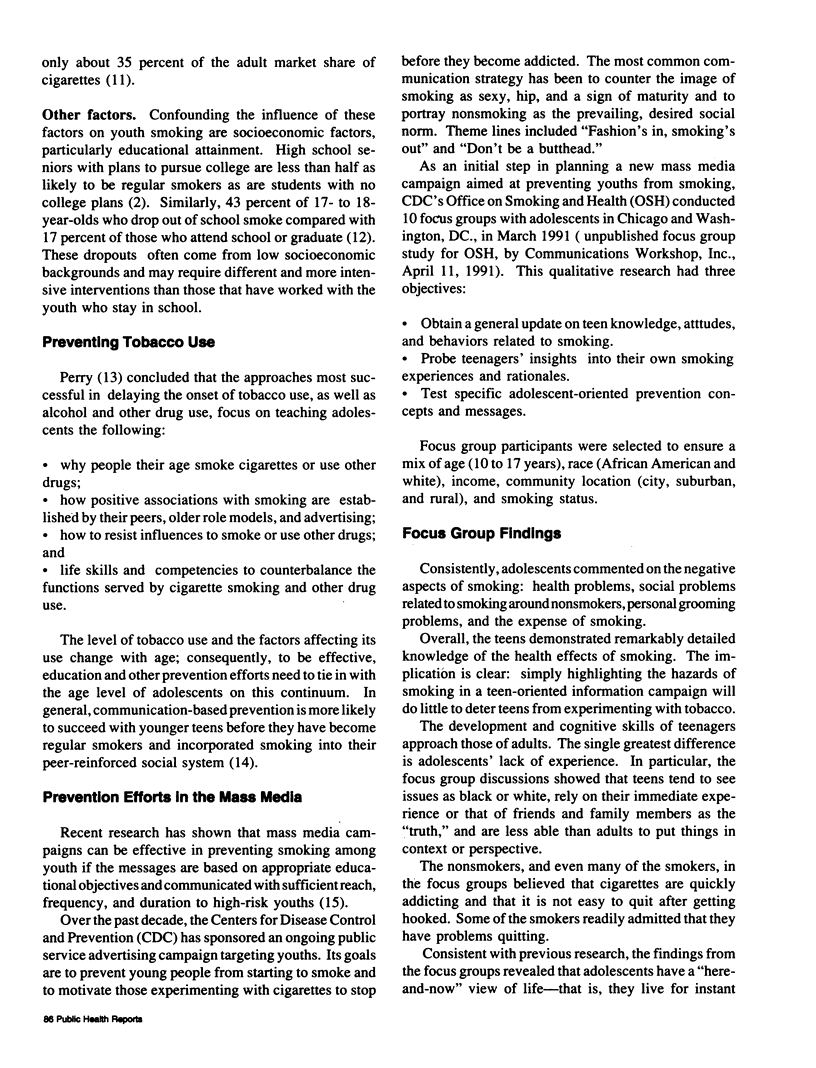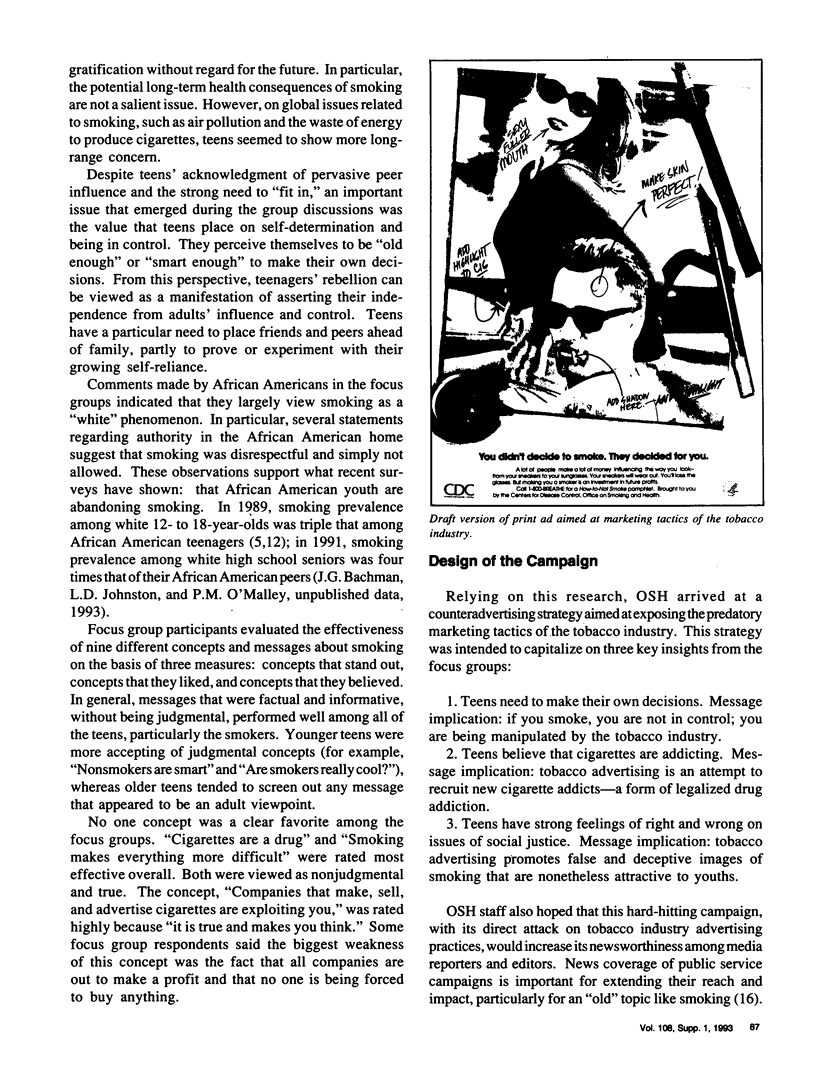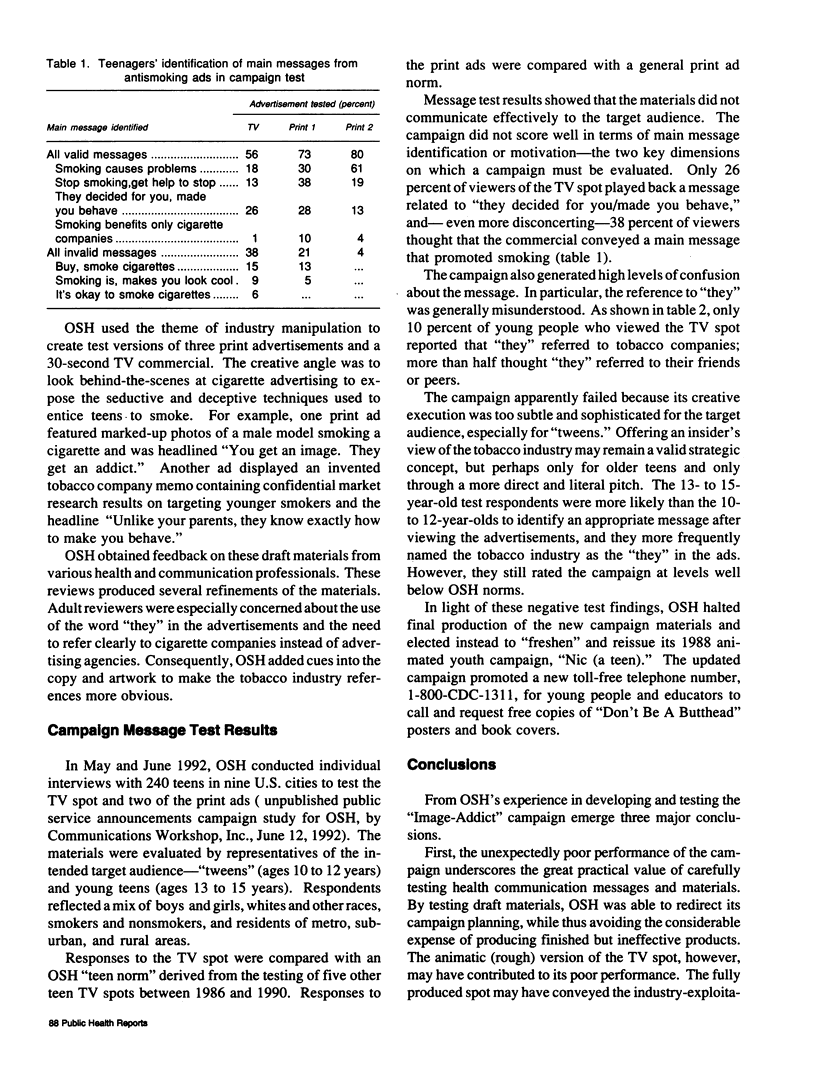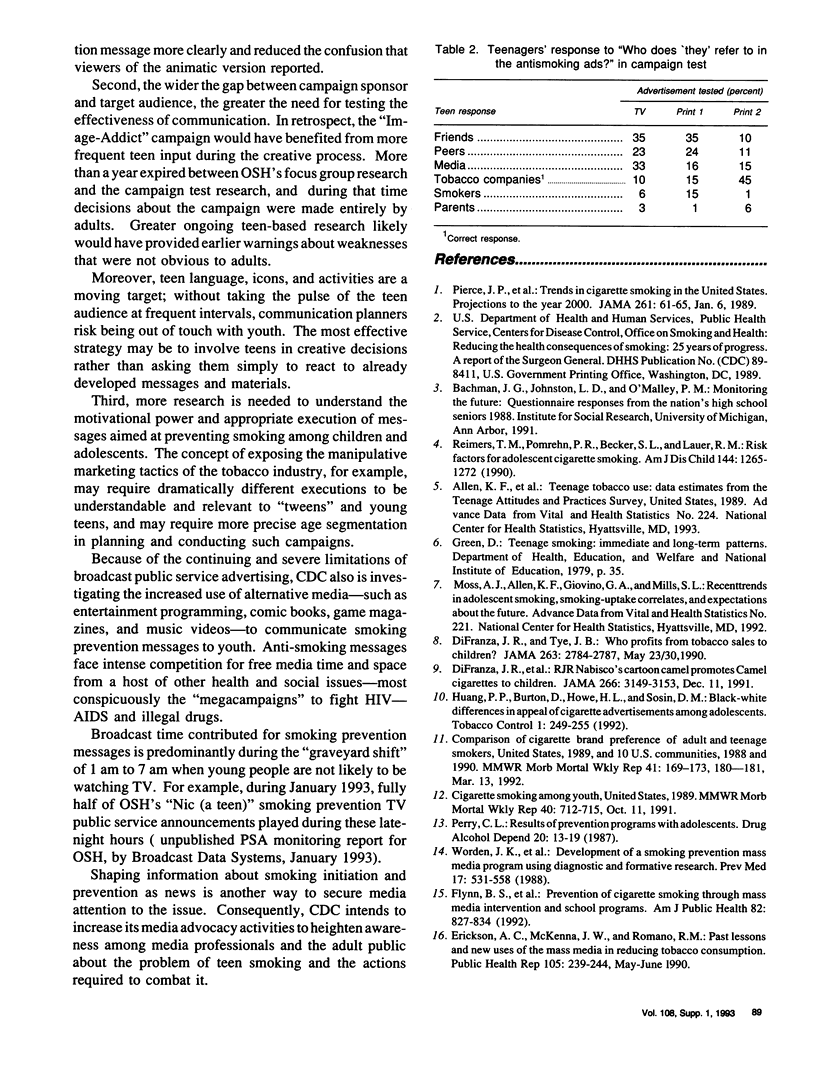Abstract
Focus group research conducted by the Centers for Disease Control and Prevention's Office on Smoking and Health suggested that the desire of teenagers to gain control over their lives would make them responsive to a counteradvertising strategy aimed at exposing the predatory marketing techniques of the tobacco industry. On the basis of this strategy, the office developed draft print advertisements and a rough TV commercial featuring such theme lines as "You get an image. They get an addict." In those ads, "they" referred to cigarette companies. Subsequent testing of the campaign materials, however, indicated that the subtle, sophisticated execution of this concept of manipulation by the industry did not communicate clearly and effectively to an audience of young teens. In fact, 38 percent of those who viewed the rough TV spot believed that the main message promoted smoking. These negative test findings underscore the critical need for ongoing audience research throughout the creative process to ensure that campaign planners stay "in tune" with their consumers.
Full text
PDF




Selected References
These references are in PubMed. This may not be the complete list of references from this article.
- DiFranza J. R., Richards J. W., Paulman P. M., Wolf-Gillespie N., Fletcher C., Jaffe R. D., Murray D. RJR Nabisco's cartoon camel promotes camel cigarettes to children. JAMA. 1991 Dec 11;266(22):3149–3153. [PubMed] [Google Scholar]
- DiFranza J. R., Tye J. B. Who profits from tobacco sales to children? JAMA. 1990 May 23;263(20):2784–2787. [PubMed] [Google Scholar]
- Erickson A. C., McKenna J. W., Romano R. M. Past lessons and new uses of the mass media in reducing tobacco consumption. Public Health Rep. 1990 May-Jun;105(3):239–244. [PMC free article] [PubMed] [Google Scholar]
- Flynn B. S., Worden J. K., Secker-Walker R. H., Badger G. J., Geller B. M., Costanza M. C. Prevention of cigarette smoking through mass media intervention and school programs. Am J Public Health. 1992 Jun;82(6):827–834. doi: 10.2105/ajph.82.6.827. [DOI] [PMC free article] [PubMed] [Google Scholar]
- Perry C. L. Results of prevention programs with adolescents. Drug Alcohol Depend. 1987 Sep;20(1):13–19. doi: 10.1016/0376-8716(87)90071-8. [DOI] [PubMed] [Google Scholar]
- Pierce J. P., Fiore M. C., Novotny T. E., Hatziandreu E. J., Davis R. M. Trends in cigarette smoking in the United States. Projections to the year 2000. JAMA. 1989 Jan 6;261(1):61–65. [PubMed] [Google Scholar]
- Reimers T. M., Pomrehn P. R., Becker S. L., Lauer R. M. Risk factors for adolescent cigarette smoking. The Muscatine study. Am J Dis Child. 1990 Nov;144(11):1265–1272. doi: 10.1001/archpedi.1990.02150350097035. [DOI] [PubMed] [Google Scholar]
- Worden J. K., Flynn B. S., Geller B. M., Chen M., Shelton L. G., Secker-Walker R. H., Solomon D. S., Solomon L. J., Couchey S., Costanza M. C. Development of a smoking prevention mass media program using diagnostic and formative research. Prev Med. 1988 Sep;17(5):531–558. doi: 10.1016/0091-7435(88)90051-5. [DOI] [PubMed] [Google Scholar]


